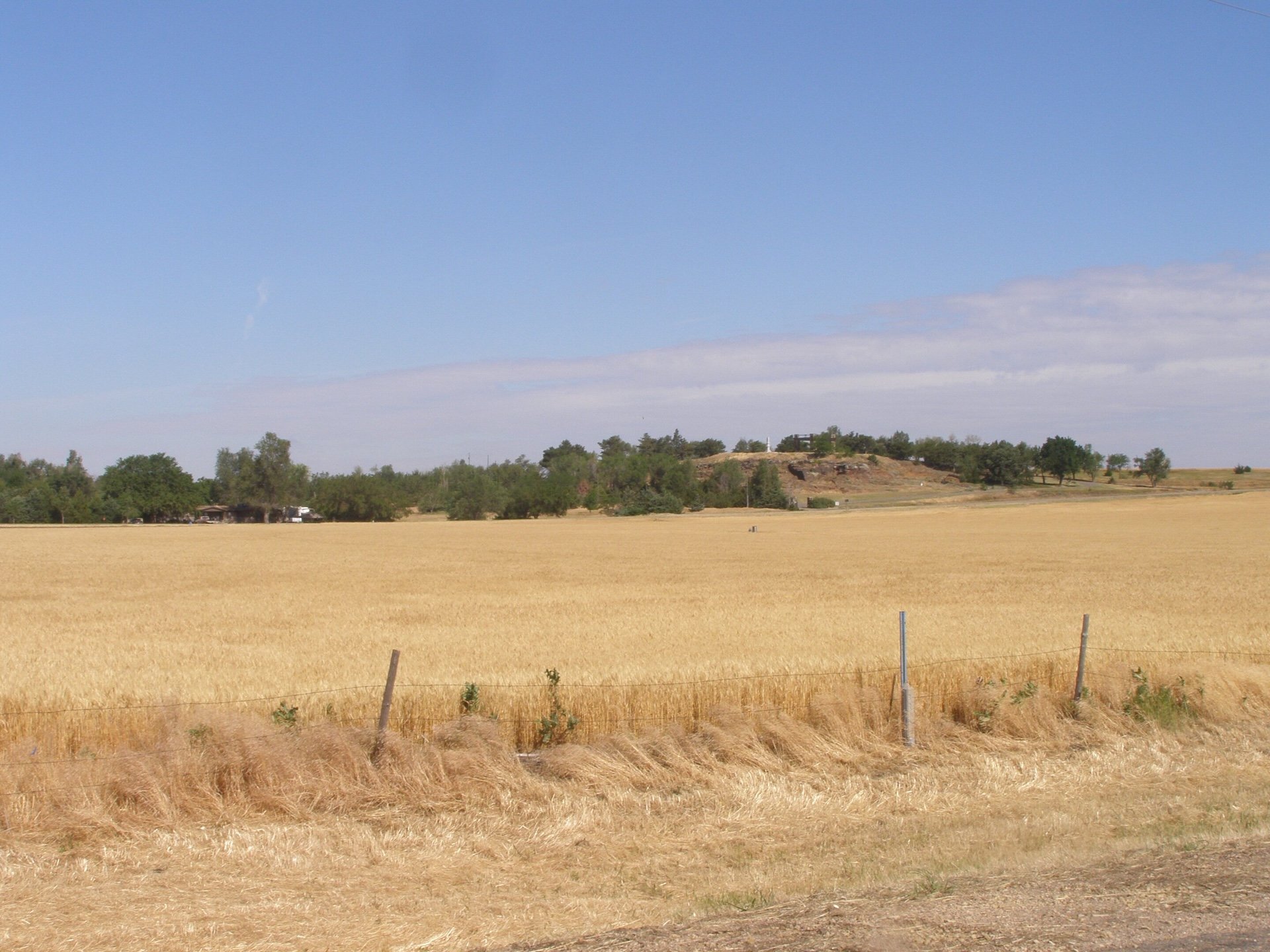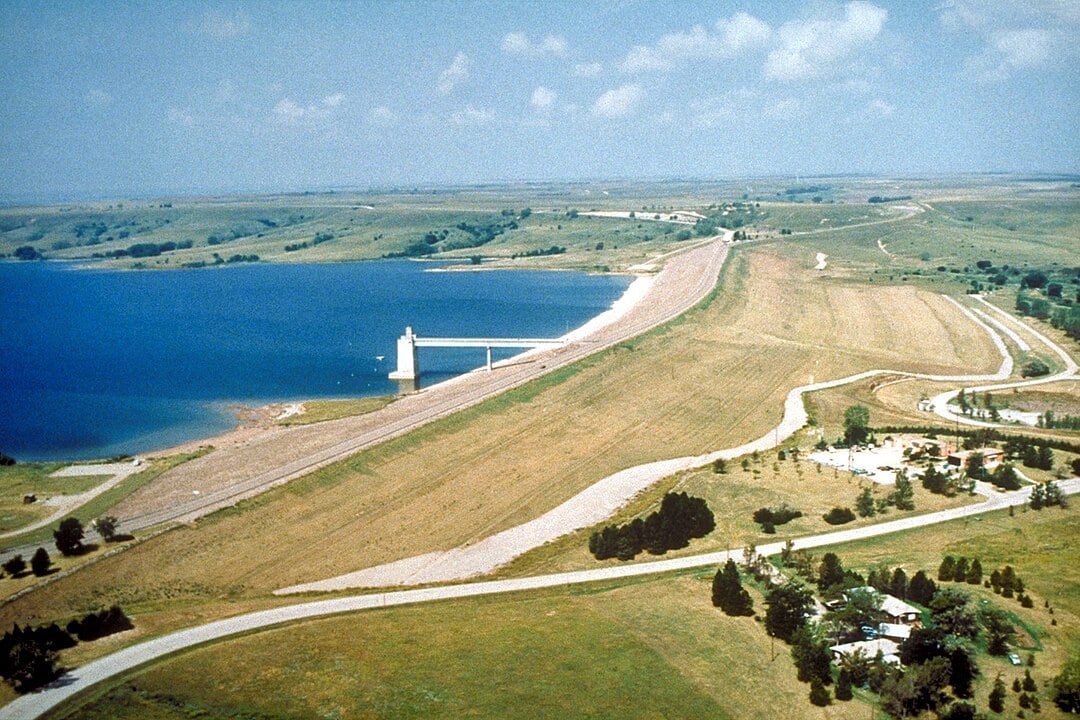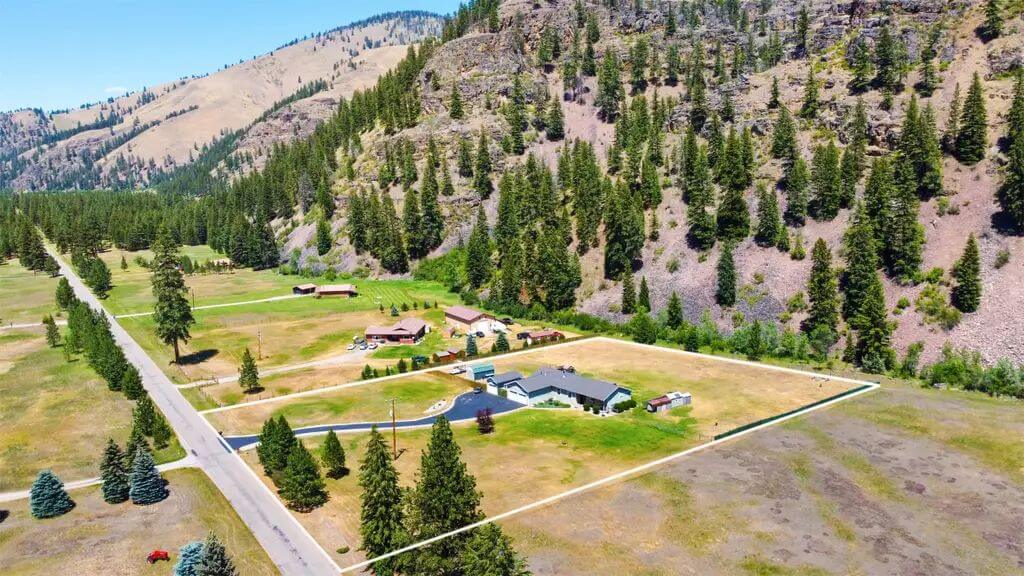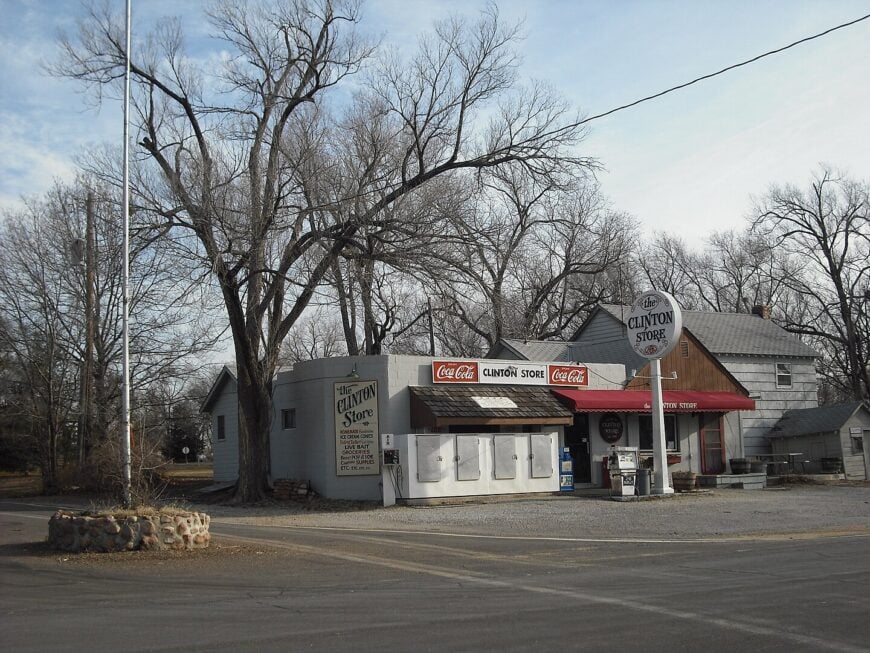
Eastern Kansas leans into its quiet with the steadiness of a place that has nothing to prove. In Matfield Green, a few houses gather against the tallgrass, their porches turned toward skies that shift color by the hour. Cedar Point keeps its old stone mill beside the Cottonwood River, the wheel long stopped but the limestone walls still cool to the touch. These towns speak less in spectacle than in texture—prairie wind against clapboard, the creak of a screen door, the stretch of road that seems to vanish into light.
The Flint Hills give the region its identity, rolling in tallgrass that once covered a continent and now survives here more fully than almost anywhere else. To call this area “eastern Kansas” is almost misleading; it feels like a borderland between what remains and what was lost, a landscape that insists on both continuity and renewal.
In Bushong or Quenemo, you find evidence of how people adapt to that scale. Church suppers, small festivals, river bends where cottonwoods throw their shade—the rituals may be modest, but they hold a certain gravity. What defines this region isn’t remoteness, but the deliberate pace of life: conversations stretched over fence lines, sunsets that take their time, a geography that slows you down until you begin to notice what’s been here all along.
25. Matfield Green: Prairie Quiet, Painter’s Light
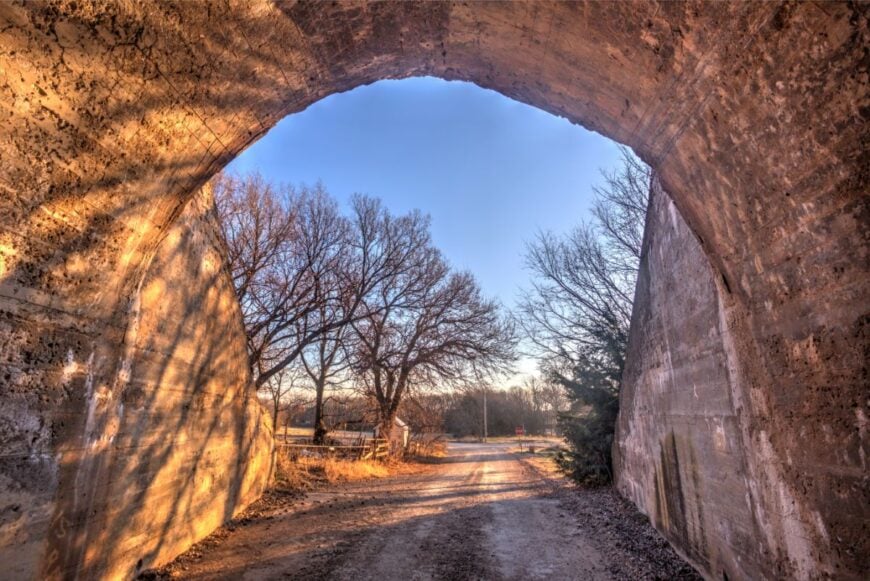
Matfield Green feels like it was tucked into the folds of the Flint Hills on purpose—just enough houses to make a town, and then miles of tallgrass waving like water. Its seclusion comes from the long distances between neighbors and the absence of big-box anything; sky and grass are the main attractions here.
The vibe is artsy-rustic: restored barns, gallery pop-ups, and front porches made for watching storms roll in. Wander backroads to prairie overlooks, visit small art spaces, or hike nearby pastures where meadowlarks stitch the silence.
Photographers chase sunset color; birders listen for greater prairie-chickens in spring. Ranching and creative work share the economic heartbeat. It’s the kind of place where the horizon teaches you to breathe slower.
Where is Matfield Green?
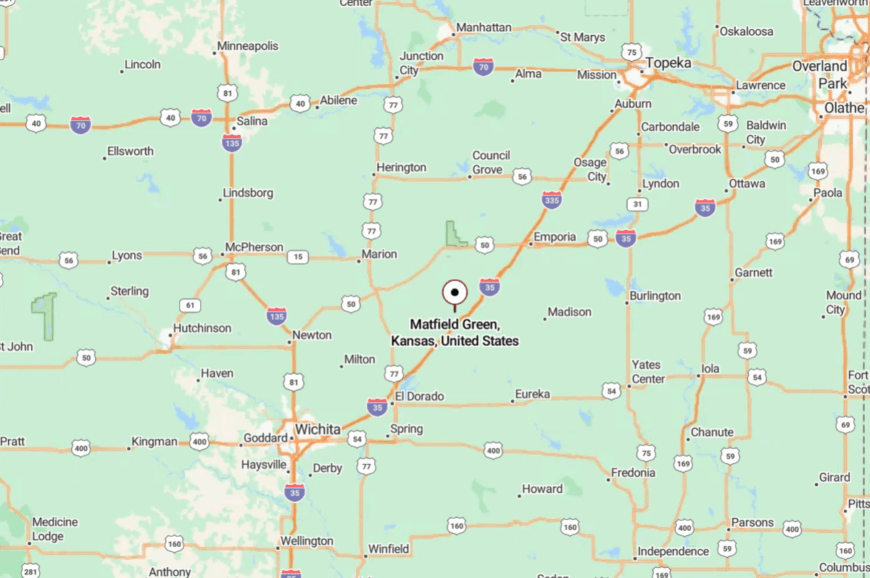
Set in the Flint Hills of Chase County in east-central Kansas, Matfield Green sits about 20 miles south of Cottonwood Falls. You reach it via K-177, a two-lane scenic byway that climbs and dips with the prairie.
The lack of interstates nearby keeps traffic thin and the night skies dark. It’s close enough for a day trip, far enough to feel like open country owns the clock.
24. Cedar Point: Stone Mill and River Murmur
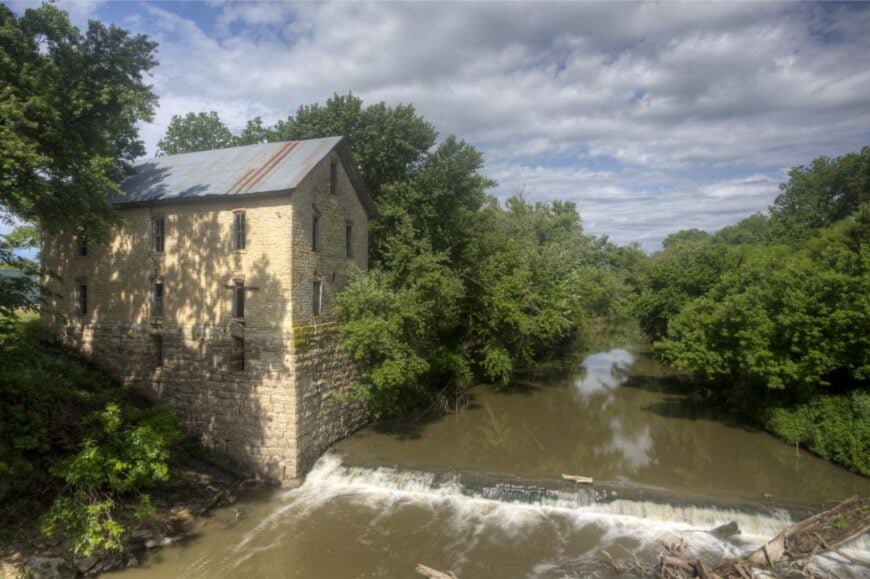
Cedar Point gathers around an old stone mill and the Cottonwood River, the sound of water giving the town a steady, gentle rhythm. It feels secluded because the hills and riparian woods hold it close, and the nearest busy streets are many quiet miles away.
The vibe is historic and lightly worn—limestone, shade trees, and the patience of river life. Admire the mill and bridge, picnic by the water, or take slow drives through the Flint Hills to catch wildflowers and wide skies.
Anglers and photographers find easy reasons to linger. Farming and ranching dominate, with heritage tourism a sprinkle on top. It’s a little pocket where time likes to eddy.
Where is Cedar Point?
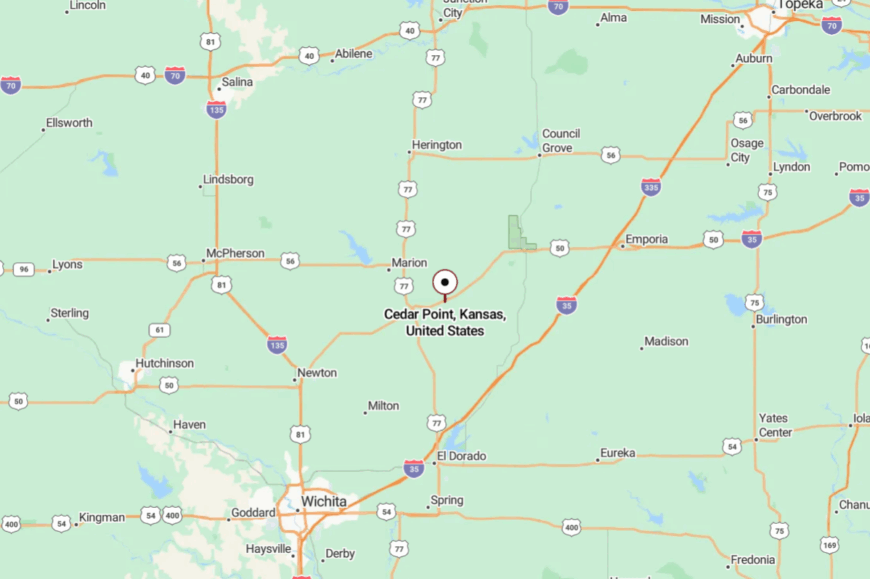
You’ll find Cedar Point in southeastern Chase County, east of Cottonwood Falls and Strong City. K-150 and K-177 get you in the neighborhood, and then you wind along county roads to town.
The last miles follow the river’s curve, trading speed for scenery. It’s the kind of approach that makes you lower your voice without knowing why.
23. Bushong: The Sleepiest Whistle-Stop

Bushong is one of those blink-and-miss places where the prairie hush is almost comical—and that’s the charm. Its seclusion comes from size (tiny) and setting (endless fields), with trains the most dramatic thing that happens some afternoons.
The vibe is minimalist rural: a few streets, big sky, and the smell of hay after rain. Walk the grid of quiet roads, scan fence lines for hawks, or take a golden-hour drive past windbreaks and old farmsteads.
Stargazing is outstanding when the moon stays shy. Agriculture is the backbone; community is the pastime. It’s the kind of quiet that resets your sense of scale.
Where is Bushong?
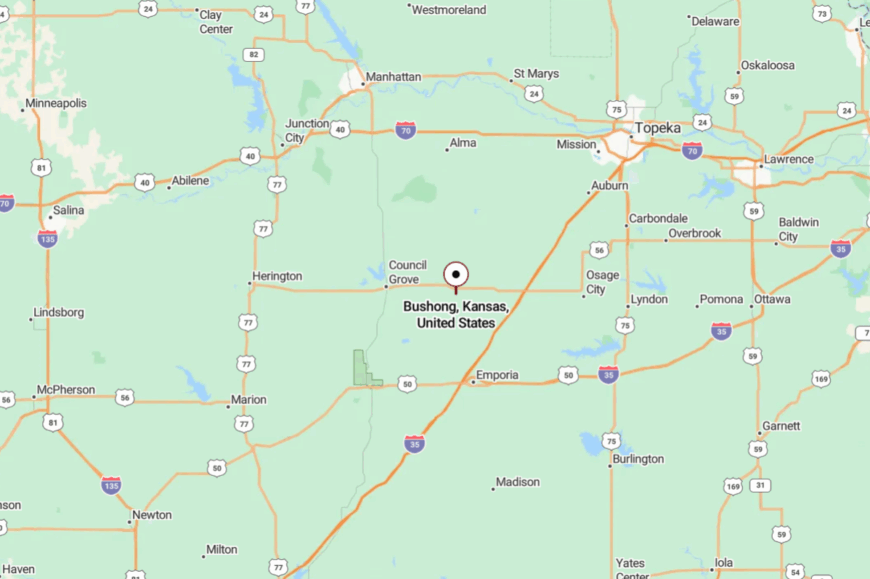
Bushong sits in northern Lyon County, about 20 miles northwest of Emporia. US-56 and K-99 are the closest through routes, with county roads doing the fine stitching at the end.
The approach is all rolling prairie and long sightlines. It feels like the horizon moves back a step just for you.
22. Reading: Rebuilt and Rooted
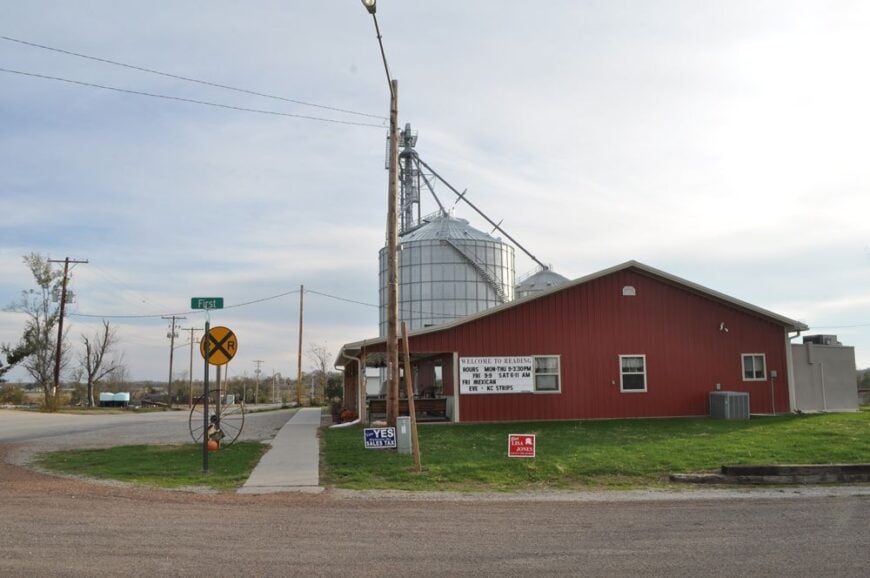
Reading wears its resilience lightly—rebuilt in places, rooted everywhere else, with tidy yards and neighbors who wave from pickups. Its secluded feel comes from the way the prairie hems it in and the distance to larger towns.
The vibe is humble and hopeful: church suppers, ballfields, and front-porch weather reports. Cast a line at a nearby farm pond, bike quiet county roads, or browse small-town events that pop up with the seasons.
Birdsong carries easily here, and dusk comes with a lavender edge. Farming, trades, and regional commuting keep the lights on. It’s a town that proves small can still be strong.
Where is Reading?
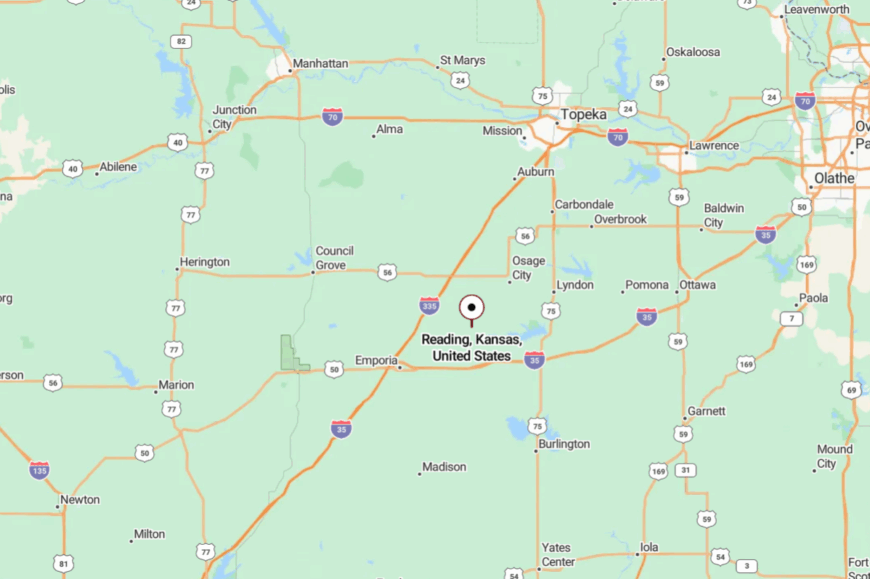
You’ll find Reading in northeastern Lyon County, roughly 15 miles northeast of Emporia. From I-35, you cut over on K-170 and local roads until the fields give way to town.
With no interstate on the doorstep, traffic thins to a trickle. It’s close to the corridor, yet wrapped in prairie calm.
21. Melvern: Lake Breezes and Long Shadows
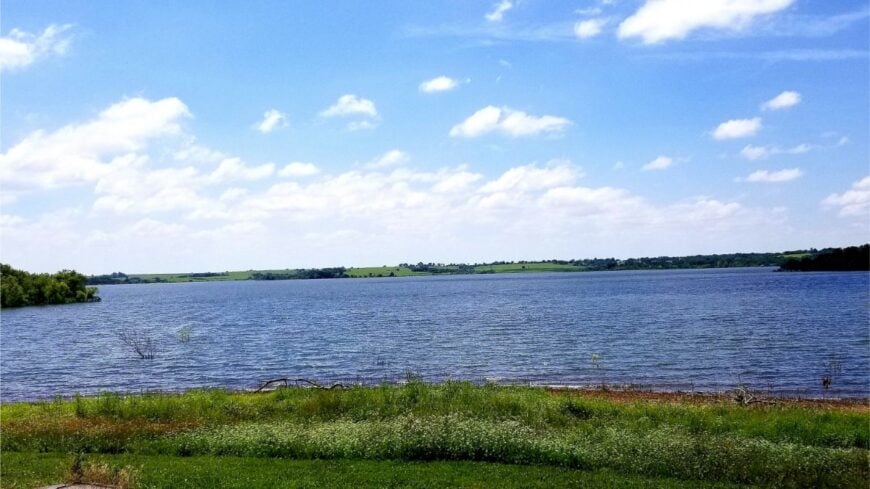
Melvern sits with its back to the prairie and its face toward water, benefiting from breezes that carry the scent of grass and cedar. Seclusion comes from the spacing of towns out here and the way Melvern Lake absorbs weekend noise into its coves.
The vibe is resort-rural: a bait shop or two, shady picnic tables, and quiet streets where kids ride bikes at twilight. Launch a kayak, hike lakeside trails, fish the riprap, or hunt for fossils in sun-warmed limestone.
Campfires crackle most evenings when the weather cooperates. Local services and recreation round out the farming base. It’s a lakeside lullaby you can hear even in town.
Where is Melvern?

In west-central Osage County, Melvern sits about 25 miles south of Topeka and a short hop from Melvern Lake. US-75 delivers you most of the way, then you peel onto county roads.
The drive trades highway rush for shoreline curves and grove-lined lanes. It’s close enough for a quick escape, far enough that the water feels like a border.
20. Quenemo: River Town with Prairie Edges
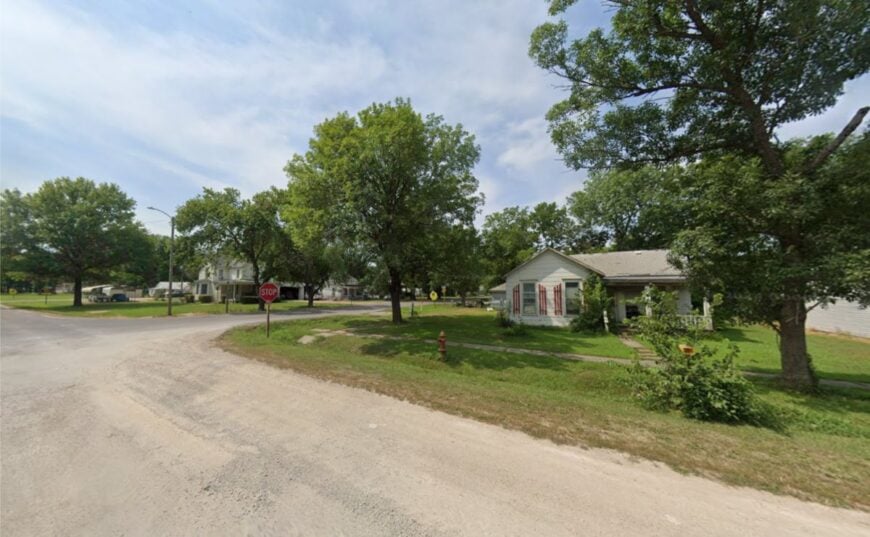
Quenemo rests along the Marais des Cygnes River, where cottonwoods whisper and the sky goes wide in every direction. Its secluded feel comes from the lattice of two-lane roads and the space between towns, which keeps life moving at a hand-shake pace.
The vibe is spare and friendly: a few blocks of homes, church bells, and river light. Fish from shaded banks, wander to nearby Melvern or Pomona lakes, or roll quiet miles on gravel to watch deer step from the hedgerows.
Sunsets are long here; so are conversations on stoops. Farming, construction trades, and regional work stitch the week together. It’s the kind of simple that feels like a luxury.
Where is Quenemo?
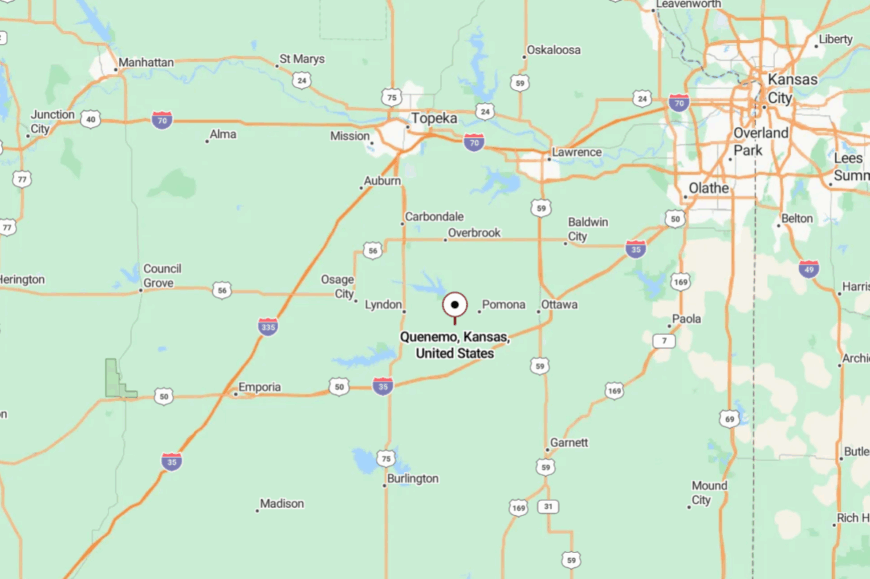
You’ll find Quenemo in southern Osage County, roughly 20 miles southwest of Ottawa. US-75 and K-68 bring you close before county roads do the gentle work.
The river guides your last turns into town. It’s off the mainline just enough to keep the volume low.
19. Pomona: A Lake at the Doorstep
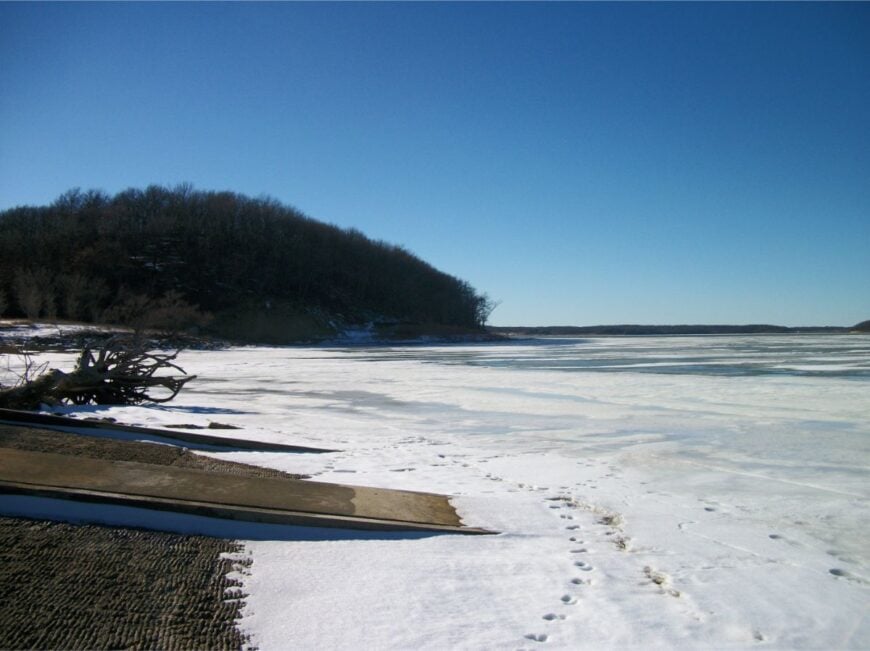
Pomona keeps an easy rhythm, with a small downtown and a lake nearby that seems to hold the town’s reflection in place. Seclusion comes from rolling farmland and the lack of fast lanes anywhere close.
The vibe is neighborly and outdoorsy: coffee at first light, boats cutting a silver line by midmorning, and porch talk after supper. Launch at Pomona Lake, hike prairie-edge trails, browse seasonal markets, or chase crappie under shady coves.
Weekends feel like a gentle festival of small pleasures. Agriculture and lake-season business share the load. It’s a soft-spoken town with a steady heartbeat.
Where is Pomona?
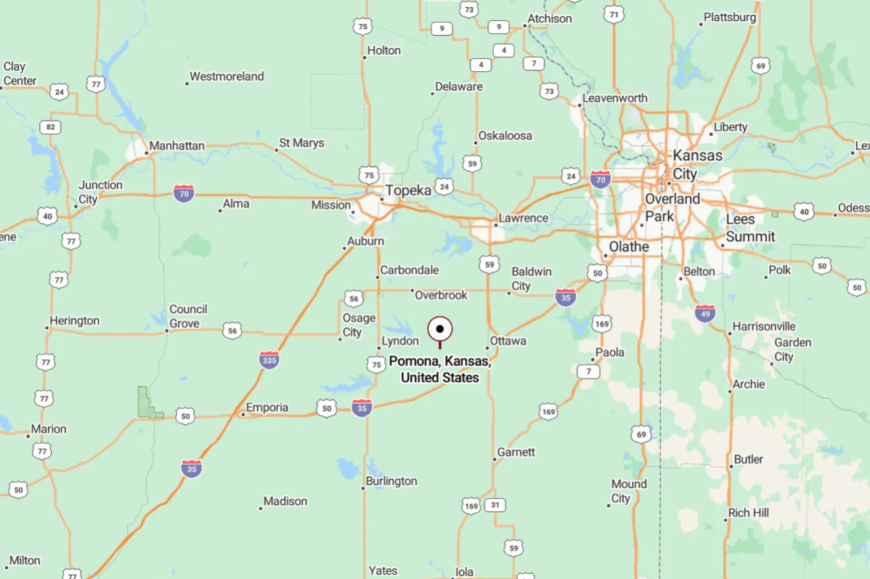
Pomona sits in western Franklin County, about 12 miles west of Ottawa and just north of Pomona Lake. US-68 and K-268 are your main approach routes.
The last miles pass hay bales and windbreaks, not billboards. By the time you arrive, the world has already slowed down.
18. Williamsburg: Prairie Crossroads with a Friendly Wave
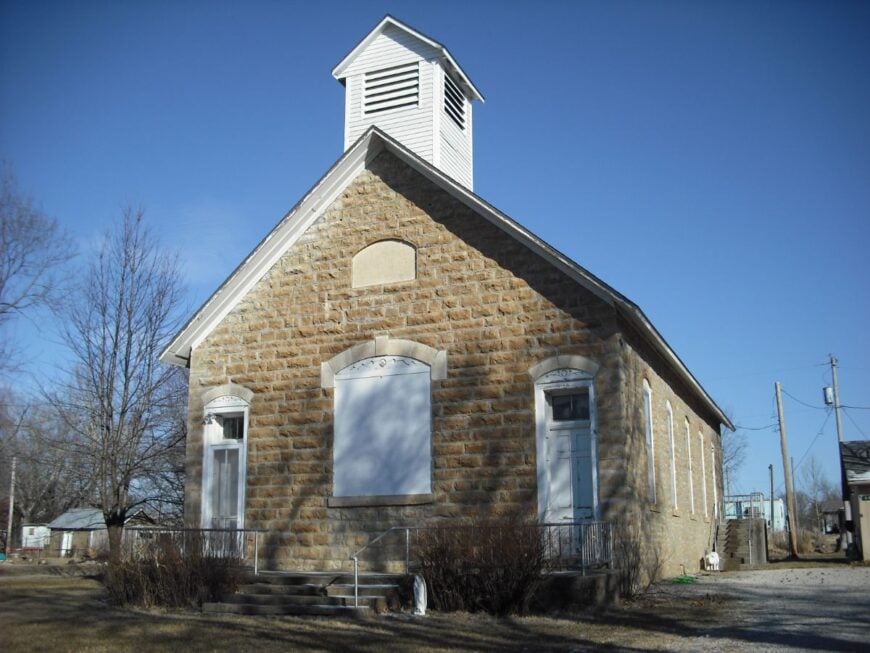
Williamsburg is the kind of place that greets you with a wave before you find the city limit sign. Its seclusion is a factor of spacing—fields, hedgerows, and a good stretch to any bigger town—so life lands softer here.
The vibe is wholesome and practical: tidy streets, a café that knows your order, and ballgames under summer lights. Take scenic drives on gravel spurs, birdwatch along shelterbelts, or detour to nearby lakes for fishing and picnics.
Tractor parades and church dinners still mark the calendar. Farming and small shops keep the week turning. It’s a town that remembers your name and the color of last night’s sunset.
Where is Williamsburg?
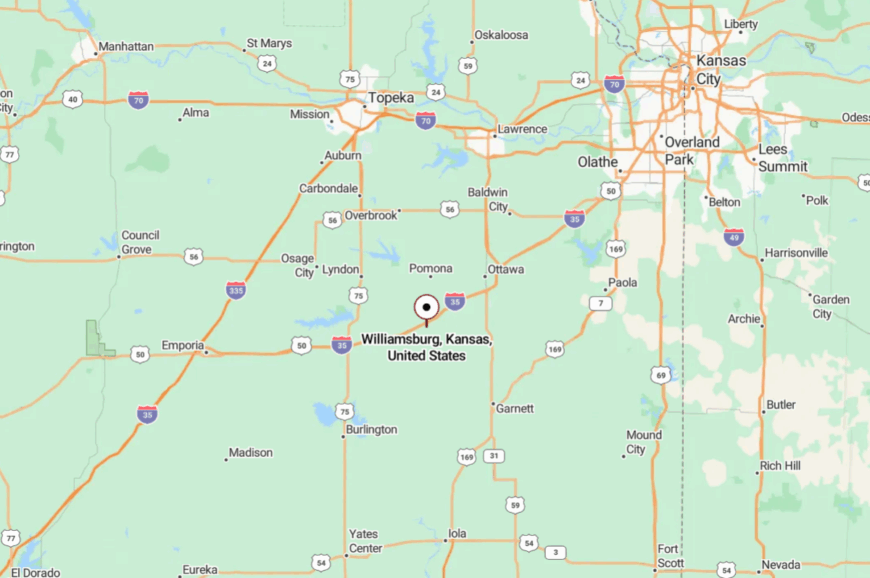
Located in western Franklin County, Williamsburg lies about 20 miles west of Ottawa and south of I-35. You exit the interstate and settle into county roads that run past pastures and prairie.
With no major highway cutting through, traffic fades fast. The horizon does most of the talking out here.
17. Lane: A Few Streets, Endless Sky
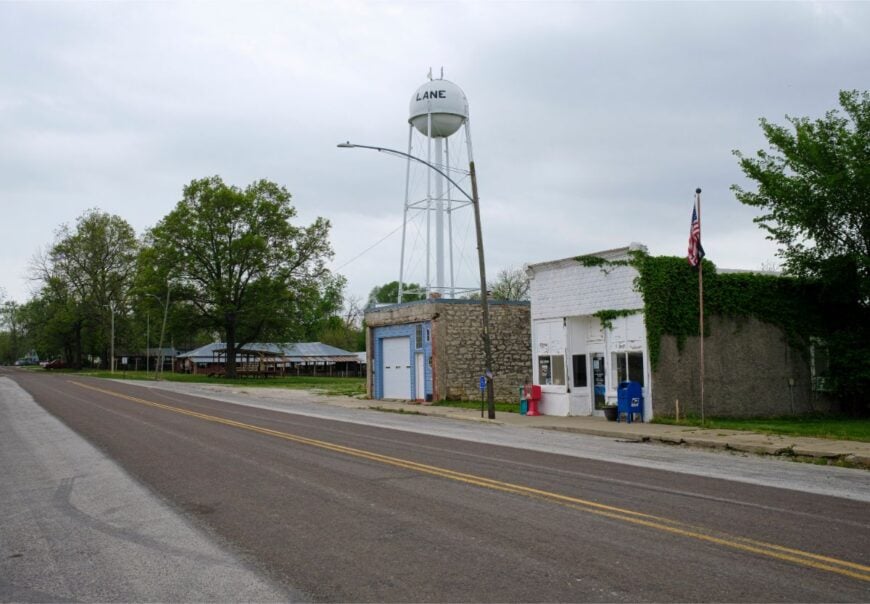
Lane is small enough to count the porches and big enough in spirit to feel like a village of friends. Seclusion comes from the prairie distance to larger hubs and the absence of through traffic.
The vibe is simple and sincere: garden plots, evening walks, and a café where the pie is made like it matters. Drive out for sunflower-lined photo ops, cast a line at a nearby farm pond, or loop country roads to watch hawks ride thermals.
You’ll hear coyotes at night and meadowlarks in the morning. Farming and commuting to nearby towns share the wage-earning. It’s the sort of quiet that fits like a favorite jacket.
Where is Lane?
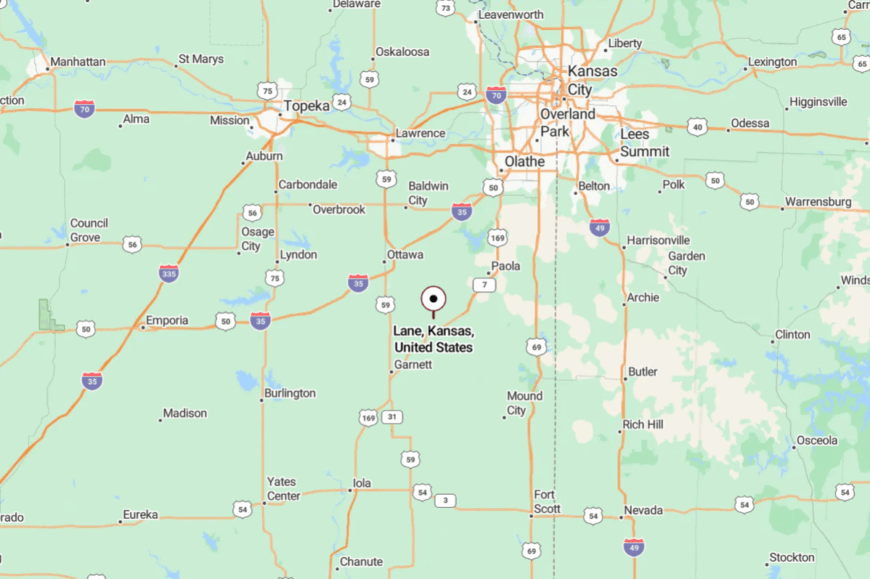
Lane sits in northern Franklin County, about 15 miles north of Garnett and a short jog east of US-169. County roads ribbon through fields and tree rows to find it.
Without a big route slicing nearby, the town stays tucked in. The approach feels like you’re being let in on something.
16. Greeley: Marais des Cygnes Backroads
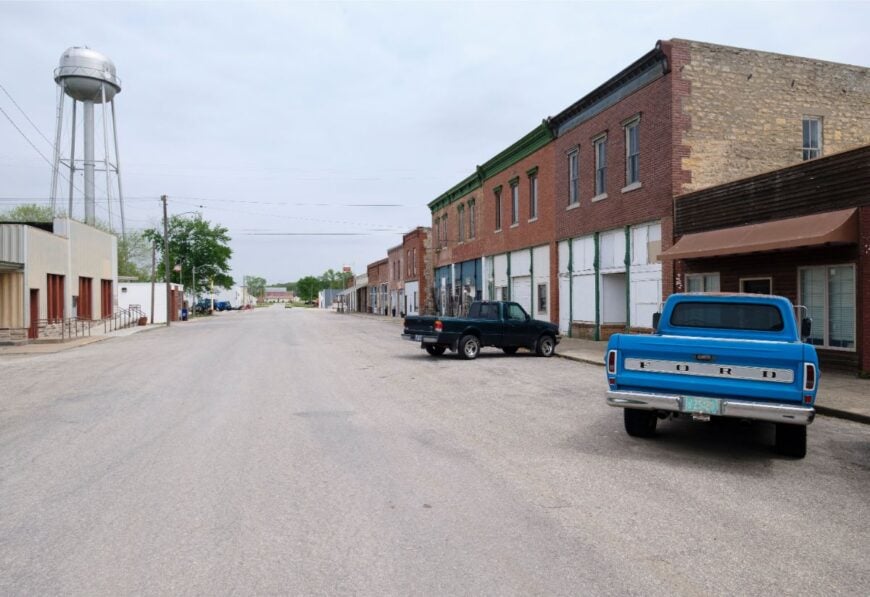
Greeley settles into the low country along the Marais des Cygnes, a river that moves like the town—unhurried, patient, sure. Its seclusion is made by backroads and bottoms; you don’t come here by accident.
The vibe is vintage rural: old storefronts, church spires, and garden fences leaning just right. Fish the river, explore gravel lanes that stitch together hedgerows, or drive to nearby wildlife areas for quiet walks.
Summer brings porch shade and cicada chorus. Agriculture anchors life, with a few shops and services steadying the rest. It’s a gentle pocket where even the wind seems to slow down.
Where is Greeley?
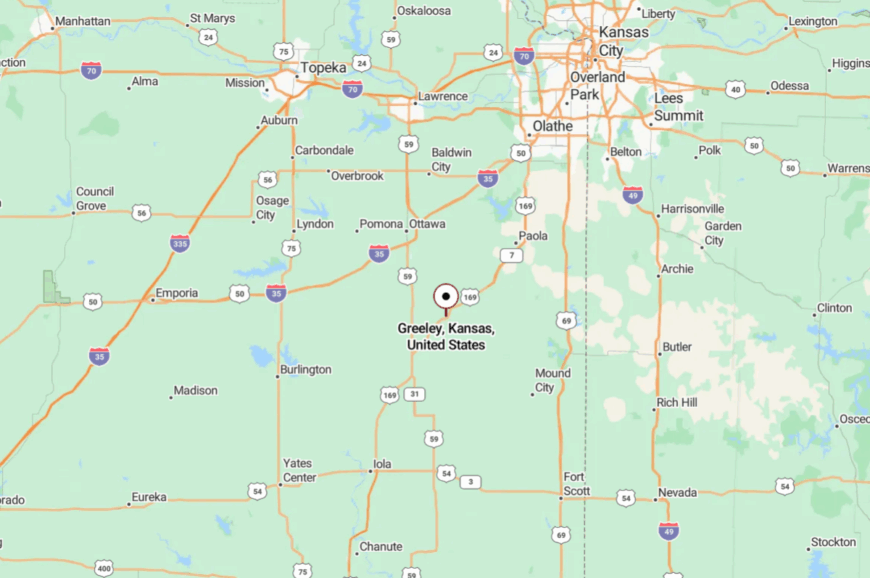
In northern Anderson County, Greeley lies roughly 20 miles south of Ottawa and a few miles west of US-169. You leave the highway for county roads that trace fields and creek bottoms.
The river keeps the landscape green and the traffic light. It’s near enough for errands, far enough to feel hidden.
15. Kincaid: Edge-of-Timber Stillness
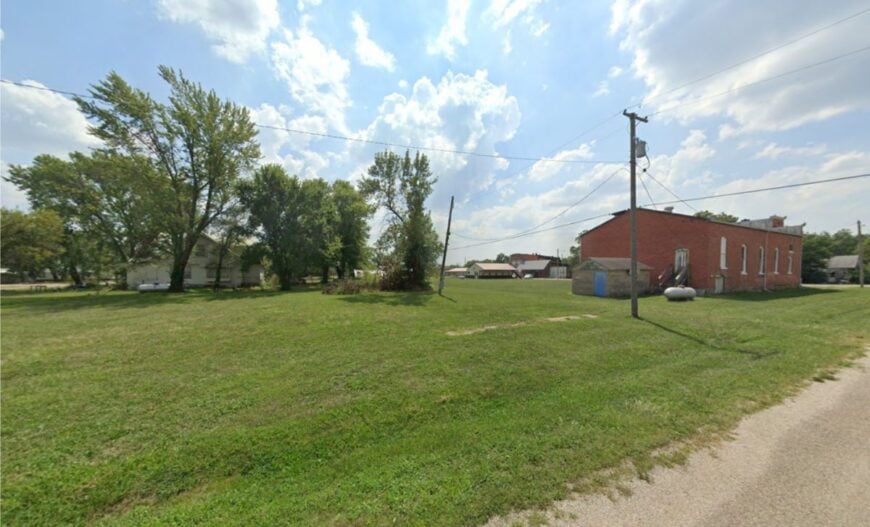
Kincaid sits where prairie starts giving way to timber, and the town takes its cue from both—open to the sky, sheltered at the edges. Its seclusion is shaped by the grid of county roads and the distance to larger services, which keeps nights dark and stars busy.
The vibe is small and steady: vintage storefronts, quiet streets, and folks who check the sky to guess the weather. Walk shaded lanes, fish nearby farm ponds, or ramble east toward woods where deer step out at dusk.
Autumn festivals bring a warm blink of bustle. Farming reigns, with a few trades and shops rounding things out. It’s the kind of place that holds a day in two hands and doesn’t spill a drop.
Where is Kincaid?
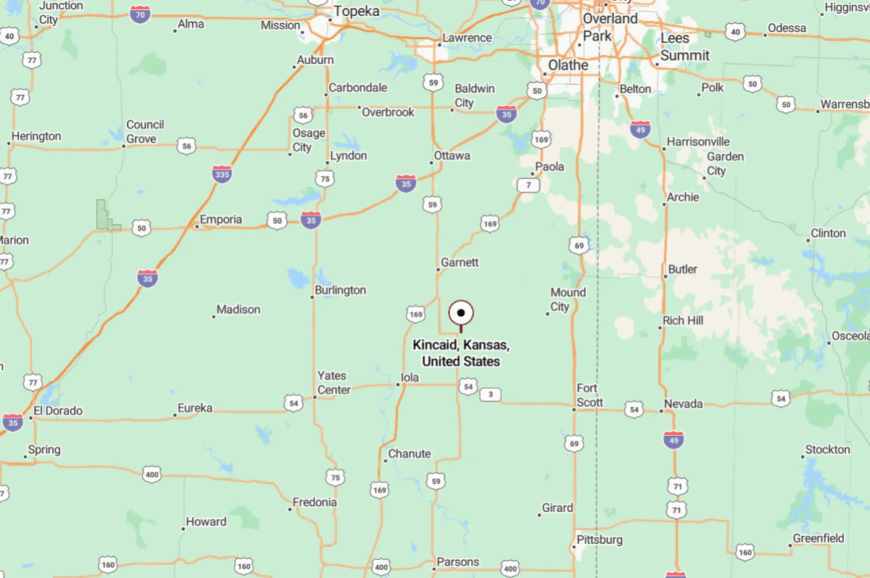
Kincaid is in southeastern Anderson County, about 18 miles east of Iola and 25 miles south of Ottawa. US-59 and US-169 form the broader frame; county roads handle the final, prettier miles.
You’ll pass hayfields and timber patches on your way in. The landscape itself acts like a privacy fence.
14. Blue Mound: High Ground, Low Noise
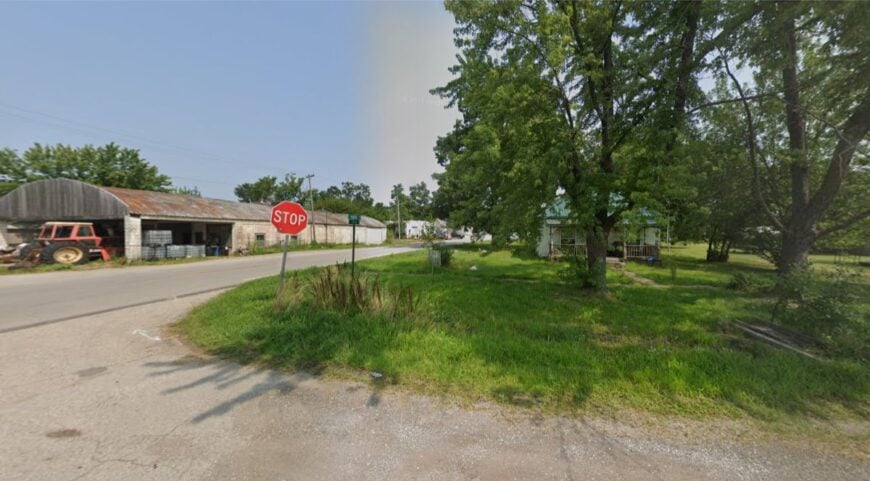
Blue Mound perches on a rise just enough to catch wind and sky, a small town with views that run all the way to quiet. Its seclusion comes from the distances of Linn County and the soft grid of roads that never hurry.
The vibe is plainspoken and peaceful: a handful of blocks, big gardens, and evenings that taste like porch lemonade. Explore nearby wildlife areas, bike gentle hills, cast for bass in farm ponds, or photograph storms building on the horizon.
On clear nights, constellations feel close enough to borrow. Farming, ranching, and regional work provide the week’s rhythm. It’s a high spot where the noise falls away.
Where is Blue Mound?
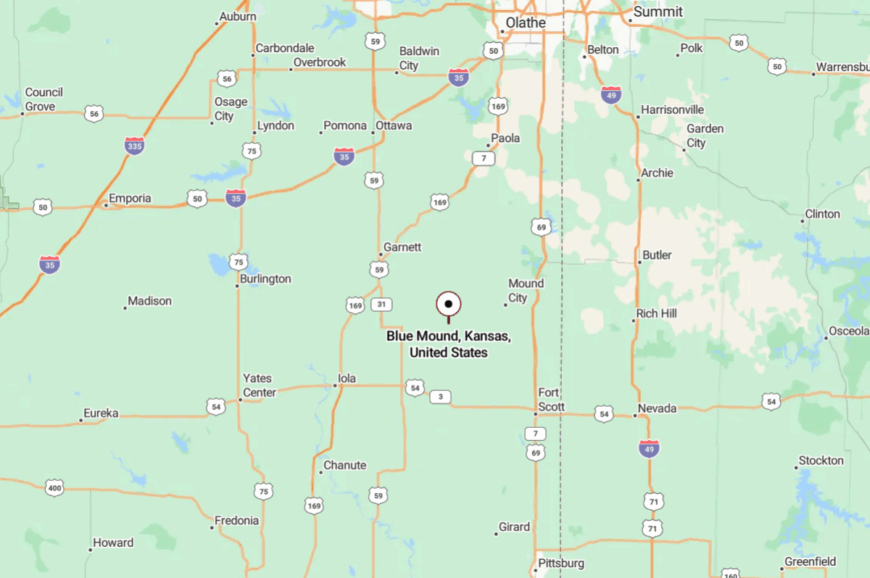
You’ll find it in western Linn County, about 25 miles southwest of Mound City. K-52 is the closest main route, with county roads doing the last leg.
The land rises and falls in slow breaths as you approach. By the time you roll in, the sky has already made friends with you.
13. Prescott: Timber Shade and Story Quiet
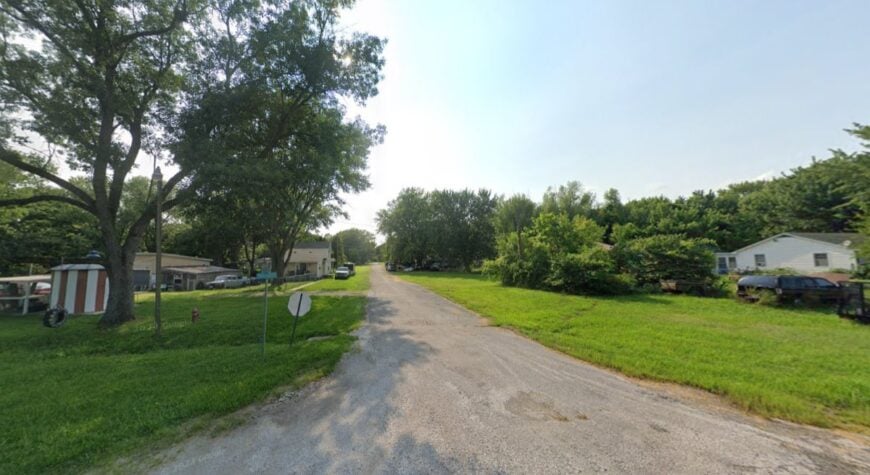
Prescott has the feel of a clearing in the woods—streets softened by trees, birdsong working the night shift. Its secluded air comes from timber stands, distance to bigger towns, and a road network that favors locals over passersby.
The vibe is historic and wooded: older homes, a few storefronts, and neighbors who keep time by garden chores and supper bells. Wander to nearby creeks, walk shaded blocks, or explore county lakes and wildlife areas not far beyond the trees.
Autumn is a real event here. Agriculture and small services keep life steady. It’s a pocket where stories travel by front porch before they ever meet the internet.
Where is Prescott?
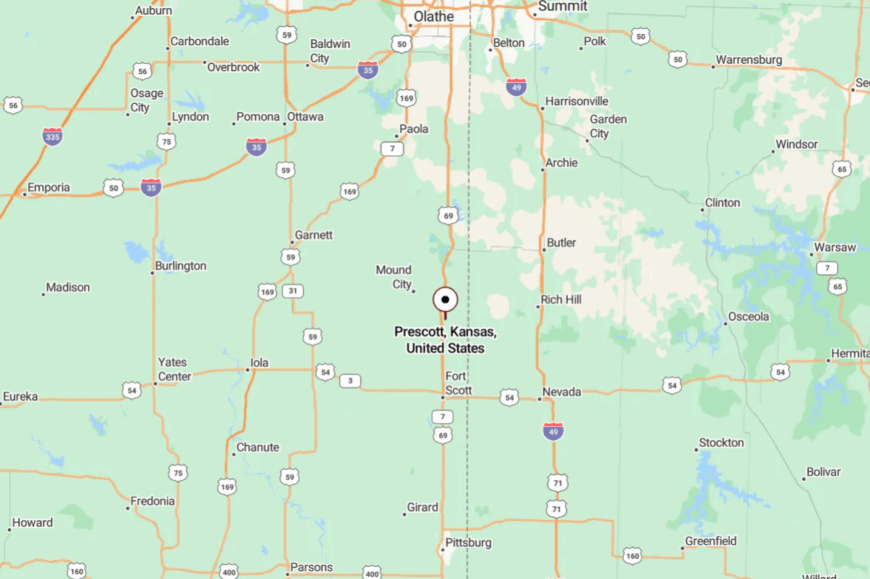
Prescott sits in southern Linn County, about 10 miles south of Mound City and east of K-7. You meander in on county roads beneath oak and hickory.
With no big highway at the doorstep, the town stays easy to miss and nice to find. The woods make a soft border around everything.
12. Mapleton: Creek Town with Old-Store Charm

Mapleton gathers along Little Osage Creek, and the water seems to slow down on purpose. Seclusion here is a mix of small size, creek bottoms, and a gentle distance to busier places.
The vibe is vintage rural: an old-store look, deep shade, and the smell of cut grass on Saturday. Fish from the banks, watch herons work the shallows, detour to nearby lakes, or wander quiet country lanes framed by hedgerows.
Summer lightning bugs earn standing ovations. Farming and a few local trades pay the bills. It’s the kind of small that feels like kindness.
Where is Mapleton?

Mapleton lies in western Bourbon County, about 20 miles west of Fort Scott. K-3 will get you close, then county roads take over along the creek.
The last turns feel like a gentle step down in volume. Water and trees make a world of their own.
11. Savonburg: Little Village at the Edge of the Woods
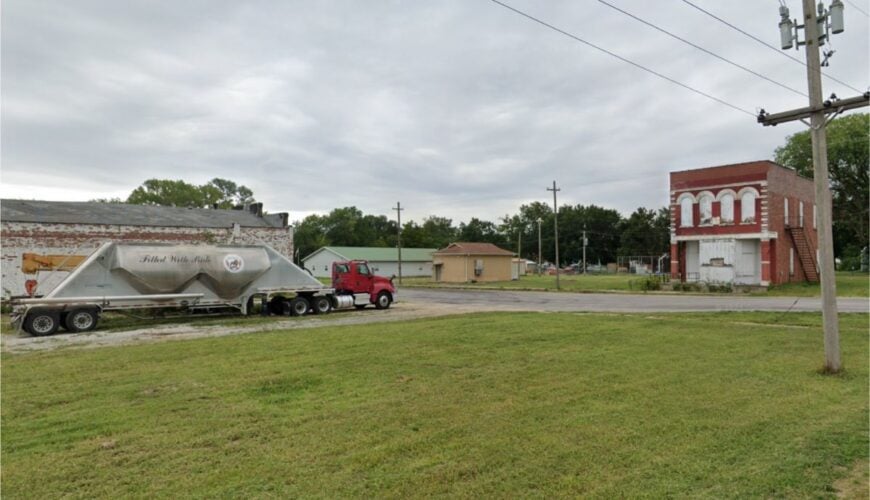
Savonburg rests at the edge of Allen County’s timber, a tiny village stitched together by gardens, songbirds, and neighborly ritual. Its secluded feel comes from distance and density—few people, many trees, and roads that rarely see a stranger.
The vibe is quietly European-tinged from its early settlers: tidy yards, a modest park, and a library that knows everyone by name. Walk shady streets, pedal out to prairie edges, watch deer at twilight, or take a short drive to nearby lakes and wildlife areas. The night sky is generous when the leaves are down.
Farming, commuting, and retirement living share the week’s purpose. It’s the kind of place that reminds you how quiet the world can be.
Where is Savonburg?
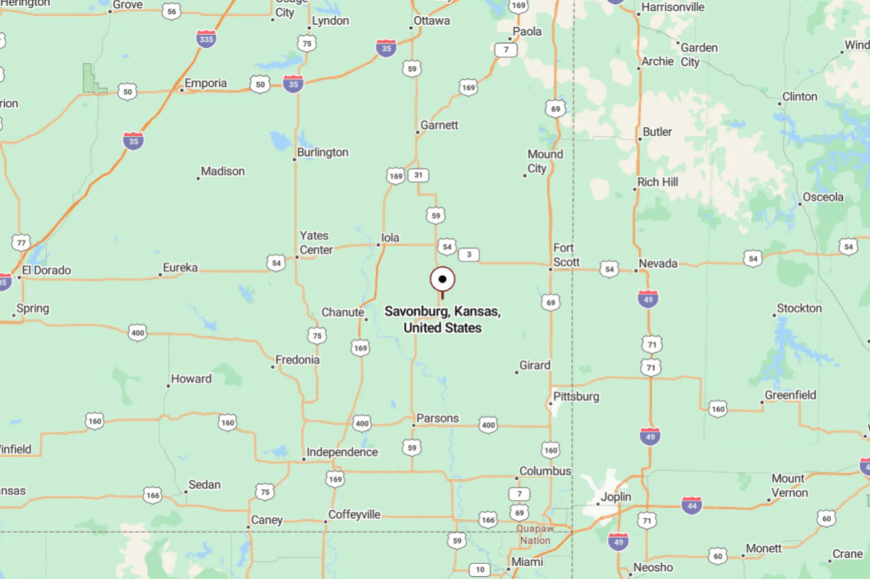
You’ll find Savonburg in southeastern Allen County, roughly 20 miles southeast of Iola and not far from the Neosho County line. US-59 sets the frame; county roads bring you the rest of the way.
The approach trades billboards for fencerows and timber. It’s close enough to reach, but far enough to feel like you’ve left everything behind.
10. Wabaunsee: Gateway to the Flint Hills
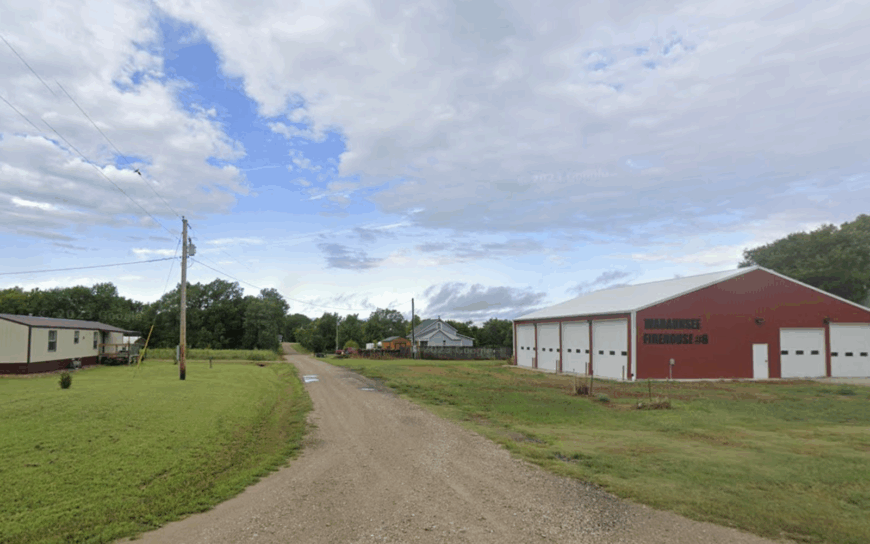
Wabaunsee is a tiny community with a population hovering around 100, offering a serene escape into the heart of the Flint Hills. I find its untouched tallgrass prairies perfect for hiking and immersing myself in nature’s tranquility.
The main industry here is agriculture, with local ranches contributing to the area’s rustic charm. What makes Wabaunsee so secluded is its vast, open landscapes and the sense that modern life hasn’t quite caught up.
The lack of commercial development means you can enjoy unspoiled vistas and quiet evenings. It’s a place where the stars seem brighter, and time feels like it moves just a bit slower.
Where is Wabaunsee?
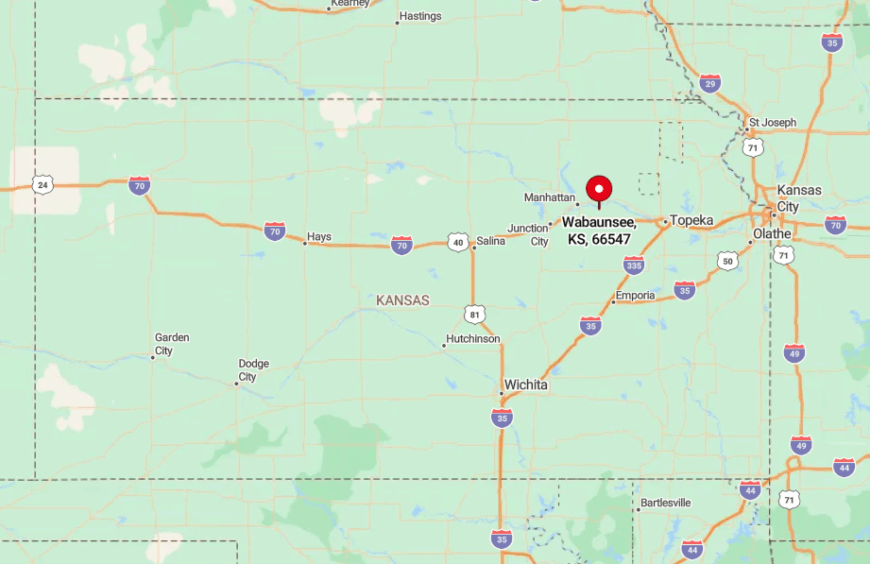
Nestled in Wabaunsee County, the town is situated near the Kansas River, about 40 miles west of Topeka. Its location deep within the Flint Hills adds to its seclusion, as the rolling terrain naturally distances it from bustling cities.
The area is accessible via country roads that meander through the prairie, enhancing the feeling of a hidden retreat. Whenever I visit, I take I-70 west from Topeka and then journey along the scenic byways that lead into this quiet enclave.
9. Fairview Township: Rustic Solitude
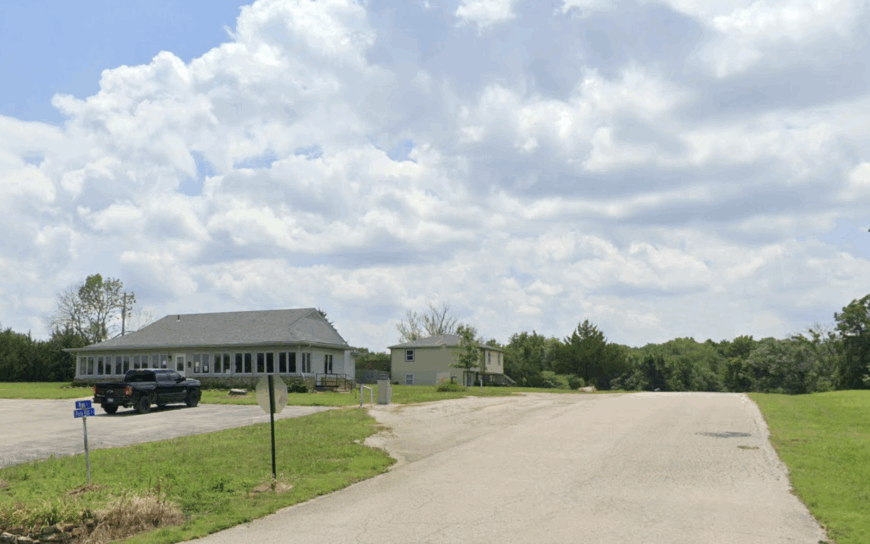
With a population just shy of 200, Fairview Township offers a genuine taste of rural Kansas life. I enjoy the open fields that stretch as far as the eye can see, making it a great spot for picnics and nature walks.
Agriculture dominates the local economy, and you can often see farmers tending to their crops or livestock. The township’s sparse population and minimal development contribute to its secluded atmosphere.
It’s the kind of place where you can hear the wind rustling through the grass without any urban noise interrupting your thoughts. The simplicity and quietness here are truly refreshing.
Where is Fairview?
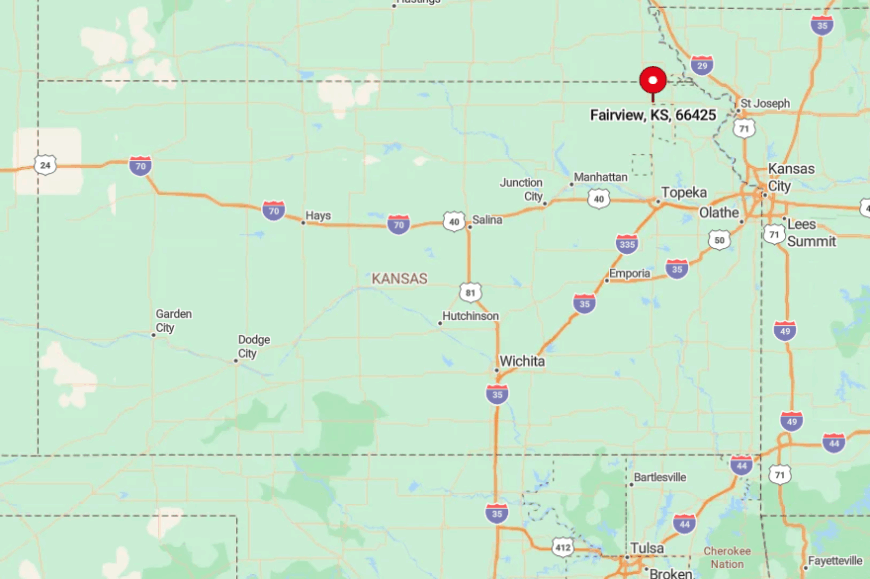
Located in Brown County, Fairview Township lies about 60 miles north of Topeka. Its remote setting amid expansive farmland enhances its isolation from city life. The township is crisscrossed by gravel roads that few travelers frequent, which adds to its peaceful ambiance.
When I’m heading there, I usually take US-75 north from Topeka and then turn onto the lesser-known county roads that lead into this tranquil area.
8. Clinton: Hidden Shores
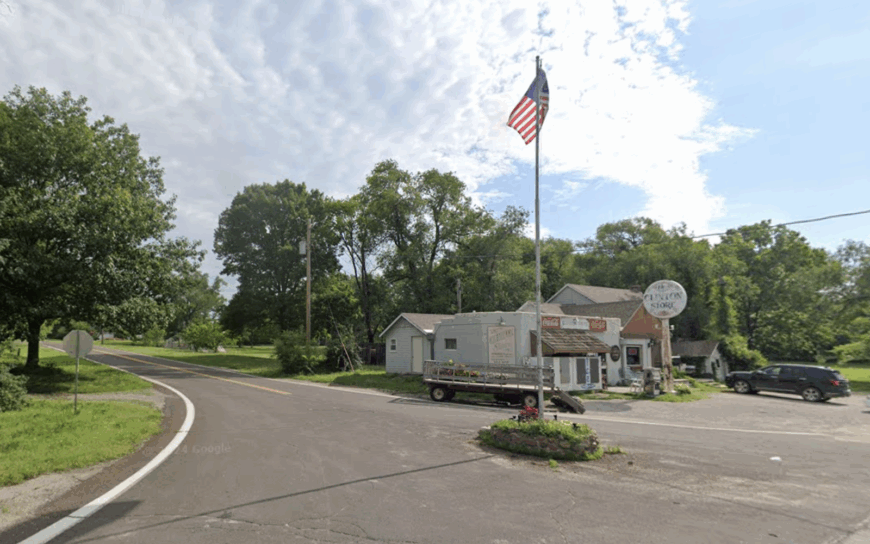
Clinton is a small community near Clinton Lake with a population of approximately 2,500. I love the access to outdoor activities like fishing, boating, and hiking along the lake’s scenic trails.
While there are some recreational services, the main industries are related to agriculture and local businesses supporting the community. Its seclusion comes from being nestled away from major highways and urban centers, offering unobstructed views of the lake and surrounding nature.
Where is Clinton?
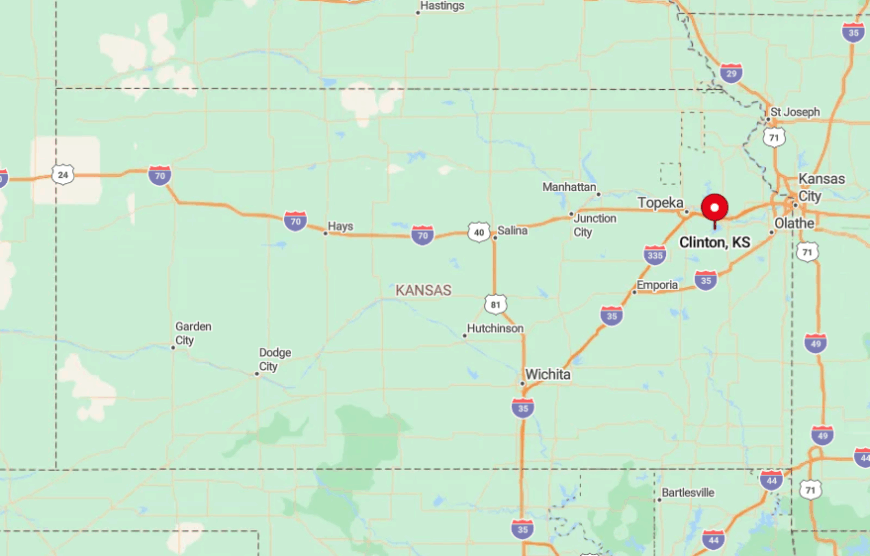
Clinton is situated in Douglas County, about 10 miles west of Lawrence. Despite its proximity to this larger city, the town feels worlds apart due to the natural barrier of the lake and surrounding parks.
To me, the winding roads and lack of through traffic contribute to its hidden nature. Access is typically via K-10 and then local roads that lead you right up to the lake’s edge, making the journey part of the serene experience.
7. Belvue Township: Rolling Hills and Quiet Nights
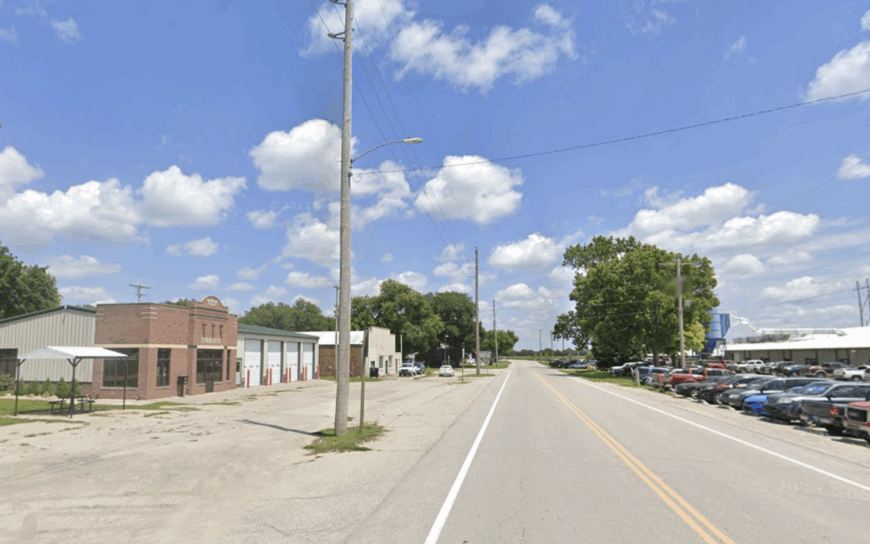
Belvue Township, with a population close to 300, offers expansive views of rolling hills and open skies. I enjoy its peaceful trails and the opportunity to observe wildlife in their natural habitat.
Agriculture is prevalent here, with many residents engaged in farming and ranching. The township’s low population density and distance from urban sprawl make it a haven of solitude. There’s a comforting stillness in Belvue that allows for restful nights and reflective days.
Where is Belvue?
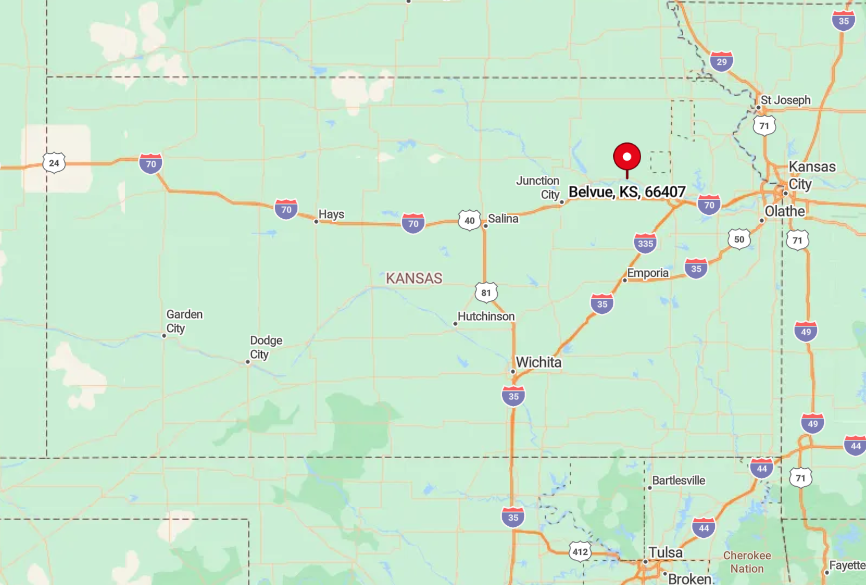
Located in Pottawatomie County, Belvue Township is about 30 miles northwest of Topeka. Its seclusion is heightened by the surrounding agricultural land and the absence of major roads cutting through.
I usually take US-24 west from Topeka and then venture onto local roads, passing through picturesque countryside to reach this quiet community. The journey reinforces the feeling of stepping away from the everyday hustle.
6. Ringo: A Whispered Secret
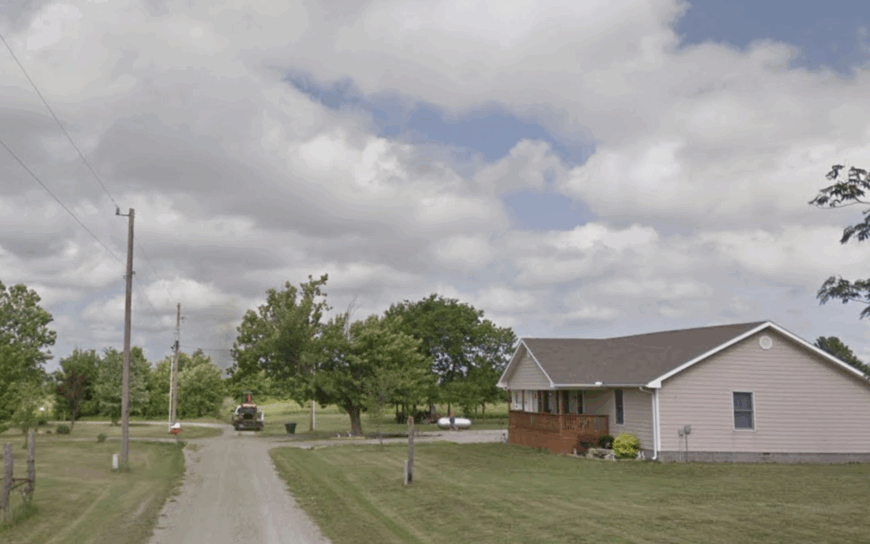
Ringo is a little-known area with a population of fewer than 50 people. I find its seclusion alluring, as it’s enveloped by forests and fields that offer a true escape into nature.
There aren’t any major industries here; it’s primarily a residential area where people appreciate privacy and the simplicity of rural life. The minimal development and lack of commercial establishments make Ringo a perfect spot for those wanting to disconnect.
Its hidden trails and natural beauty feel like a well-kept secret whispered among locals.
Where is Ringo?
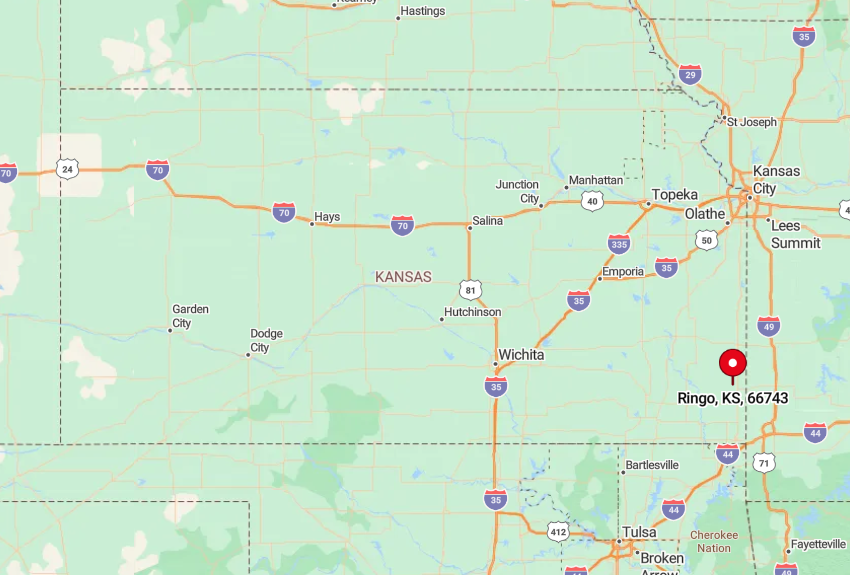
Ringo is situated in Crawford County, in the southeastern part of Kansas. It’s off the beaten path, far from any major highways or towns, which adds to its secluded charm.
To get there, I often take smaller state roads and enjoy the scenic drive through the countryside. The area’s obscurity means it’s rarely crowded, allowing for uninterrupted tranquility.
5. Globe: Serenity in the Countryside
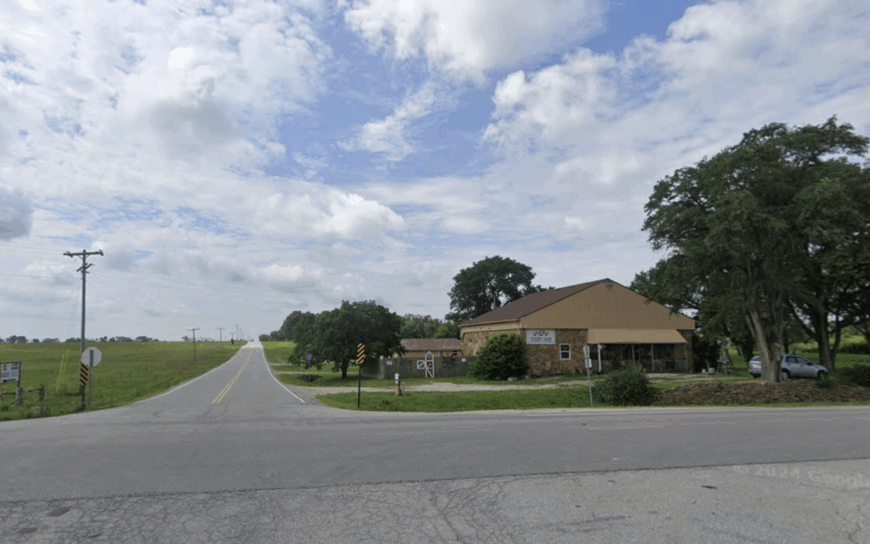
Globe is a quiet spot with a population of around 100, known for its expansive fields and rural landscapes. I appreciate the serenity that comes with the wide-open spaces, perfect for leisurely drives and soaking in the views.
The main industry here is agriculture, with vast farmlands dominating the scenery. Globe’s minimal development and distance from bustling towns make it a peaceful retreat. The simplicity of life here, away from the noise and rush, is truly invigorating.
Where is Globe?
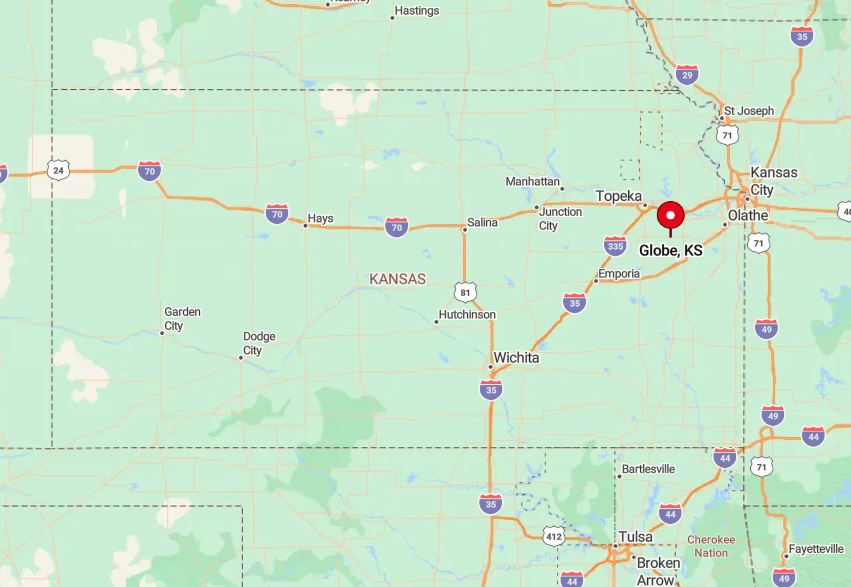
Located in Douglas County, Globe is about 15 miles southeast of Lawrence. Its seclusion is due in part to the surrounding farmland and lack of major roadways. I usually reach Globe by taking smaller county roads, which wind through the beautiful Kansas countryside.
The journey emphasizes the peacefulness that awaits in this tucked-away community.
4. Vinland: Peaceful Prairie Living
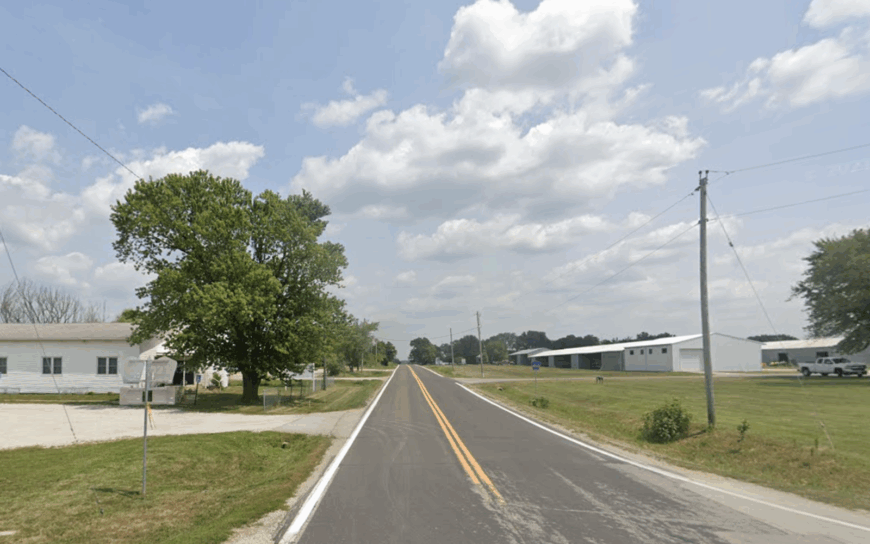
Vinland is a small unincorporated community with about 200 residents, nestled amidst gentle prairies. I enjoy visiting the historic Vinland Grange Hall and exploring the scenic trails that surround the area.
The local economy revolves around agriculture and a few small businesses. Vinland’s seclusion comes from its rural setting and lack of commercial development, offering uninterrupted views of the prairie. The calm environment and close-knit community make it a perfect place to unwind.
Where is Vinland?
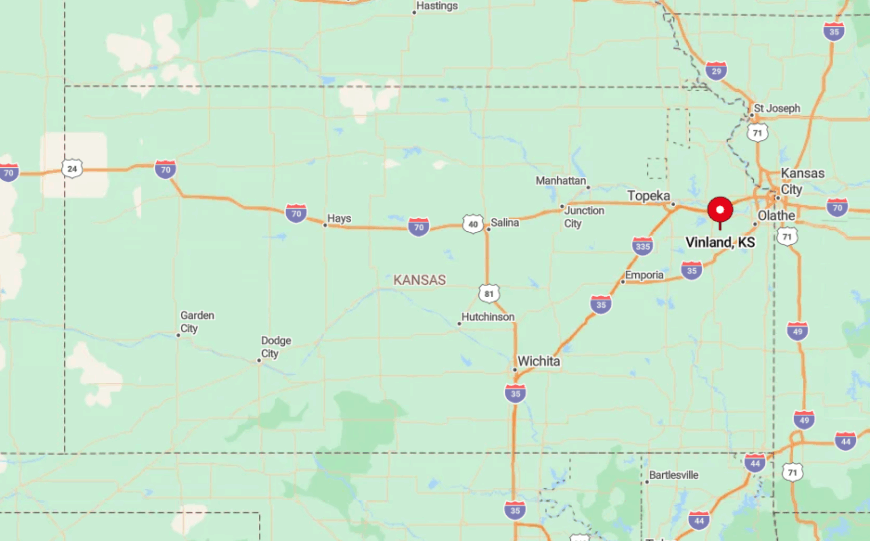
Situated in Douglas County, Vinland is approximately 10 miles south of Lawrence. Its location away from major highways contributes to its peaceful atmosphere.
To get there, I usually drive along US-59 and then take local roads that lead into this quiet enclave. The absence of heavy traffic and urban noise makes the journey as pleasant as the destination.
3. Wakarusa: Where Time Stands Still
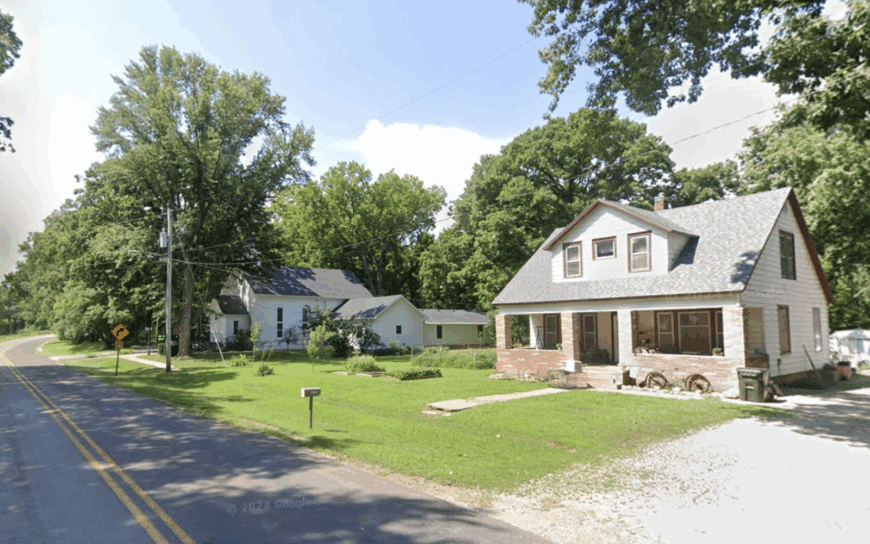
Wakarusa, with a population of around 260, offers vast farmlands and quiet roads that epitomize rural Eastern Kansas. I find joy in the simplicity of life here, from visiting local farms to strolling along serene country lanes.
Agriculture is the heartbeat of the community, and you can see the pride in the well-tended fields. The town’s seclusion is evident in its sparse population and the gentle silence that envelops it. It’s a place where you can truly disconnect and let time slow down.
Where is Wakarusa?
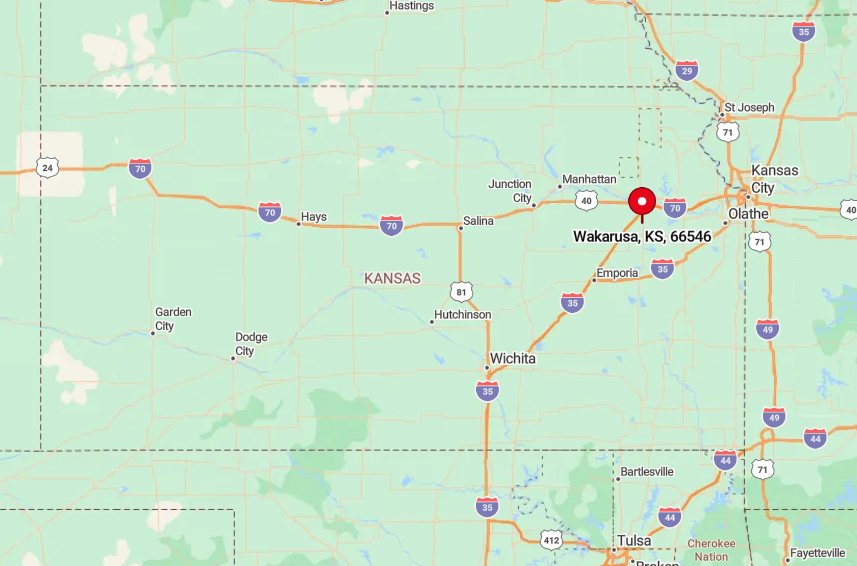
Located in Shawnee County, Wakarusa lies about 13 miles south of Topeka. Its position away from the main highways contributes to its tranquil setting.
I often take US-75 south from Topeka and then turn onto local roads that guide me into this peaceful area. The journey through the rolling countryside reinforces the feeling of stepping into a quieter world.
2. Rock Creek: Hidden Hillside Haven

Rock Creek is a hidden gem with a population of just over 500. Nestled among rolling hills, it provides serene surroundings that I find perfect for hiking and exploring nature.
The main industry is agriculture, with residents deeply connected to the land. Its seclusion stems from its hillside location and the abundance of open space. The absence of urban distractions allows for a deep connection with the natural environment, making it a haven for solitude seekers.
Where is Rock Creek?
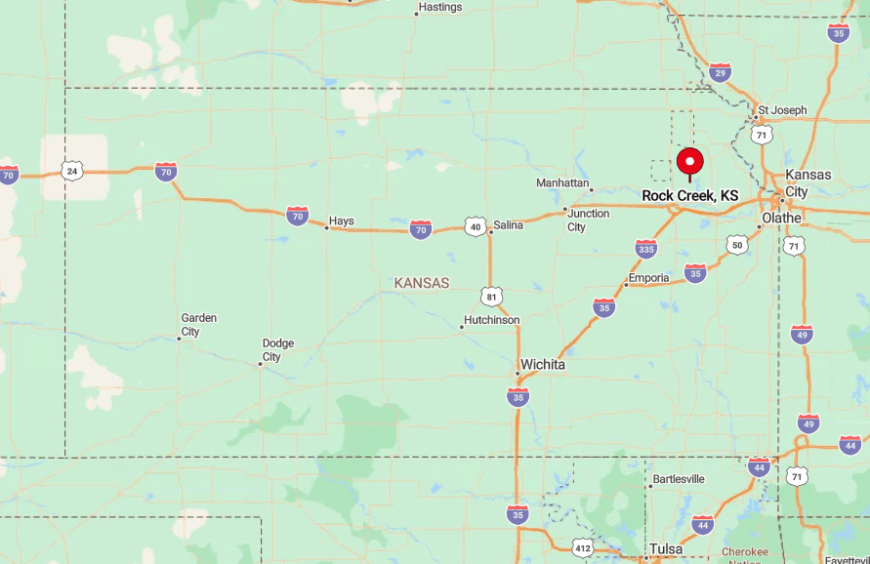
Rock Creek is located in Jefferson County, about 25 miles northwest of Lawrence. The town is tucked away among hills that shield it from the noises of busy highways.
To reach Rock Creek, I usually drive along US-24 and then take winding county roads that offer stunning views of the landscape. The journey through the hills adds to the sense of discovery and seclusion.
1. Lone Star: Lakeside Tranquility
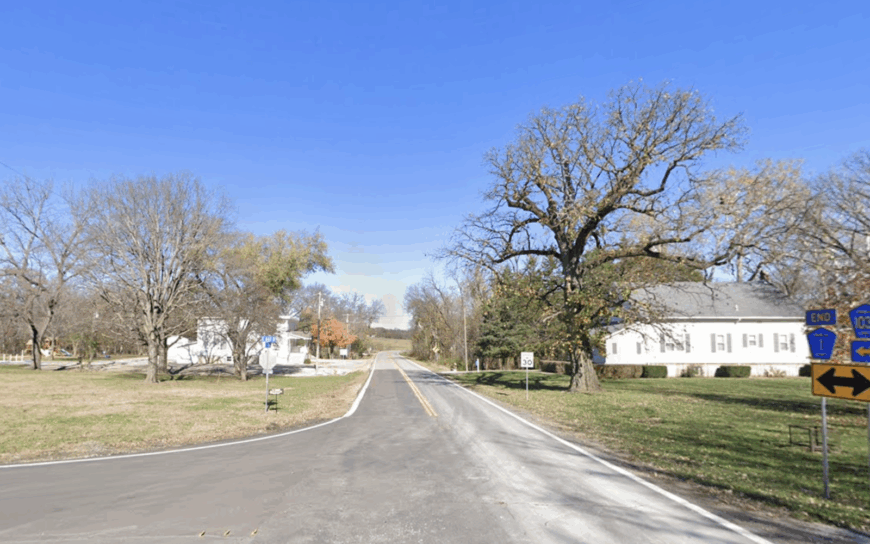
Lone Star is an unincorporated community with a population of around 150, situated near the serene Lone Star Lake. I adore spending time here, fishing, kayaking, or simply enjoying the peaceful waterside views.
There are few industries aside from local services and some recreation-related businesses. What makes Lone Star truly secluded is its expansive rural landscapes and the calming presence of the lake. The lack of urban development and the focus on nature create a tranquil atmosphere that’s hard to find elsewhere.
Where is Lone Star?
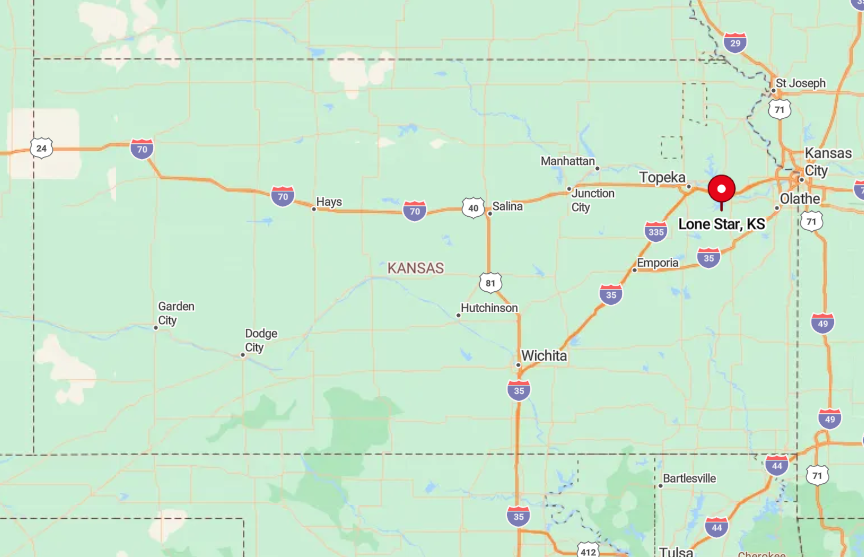
Located in Douglas County, Lone Star is about 10 miles southwest of Lawrence. Its proximity to the lake and distance from major cities contribute to its secluded feel. I often reach Lone Star by taking US-59 south from Lawrence and then turning onto county roads that lead directly to the lakeside.
The route is scenic, and the destination offers a perfect blend of water and prairie landscapes that make every visit rejuvenating.


